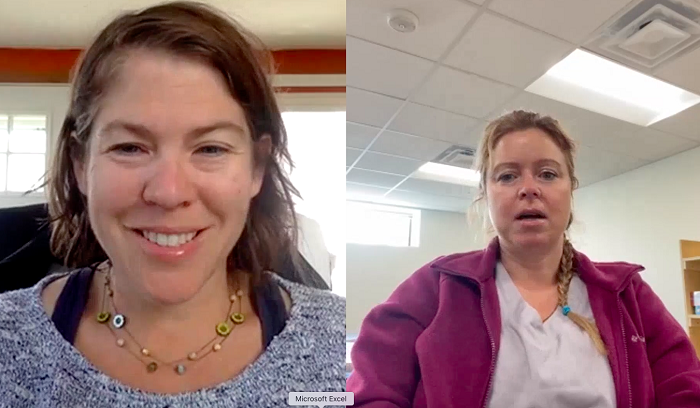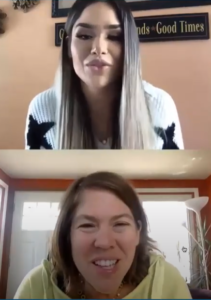- MN ABE Connect
- Archive
- In Their Own Words: ABE Students Talk About Success Strategies – Part 2
 November 30, 2020
November 30, 2020
In Their Own Words: ABE Students Talk About Success Strategies – Part 2
Stephanie Sommers, ACES CoordinatorThis fall I started working on a project to gather student voices and hear what they had to say about remote learning during COVID-19. As ABE teachers, we often have ideas about what makes a learner successful, but I wanted to hear from the students themselves. It was my plan from the start to compile what I learned into a session for the statewide Teaching and Learning at a Distance Conference that took place on November 5-6.
In Part 1 of this article, I explained the main takeaways from this project to show just how much can be learned by talking with our students about their learning strategies. In Part 2, I describe the process I went through to document these interviews.
The Process
To begin with, I reached out to a handful of ABE colleagues from around the state and asked them if they could think of any students who had really been standouts during remote learning. I explained that I wanted to conduct some student interviews to try and find out what strategies the learners had been using to navigate school during a pandemic.
I knew that I was onto something right away because almost everyone to whom I reached out responded quickly and enthusiastically. Within a few days of making my request, I was connecting with students via e-mail to introduce myself, explain the project, and schedule interviews.
Prior to interviewing the students, I compiled a list of questions. Using the Transitions Integration Framework (TIF) as inspiration, I wanted to draw out what skills students were using to help them keep on track even after learning shifted from in-person to remote instruction.
These are the questions that I asked the students to reflect on:
- How have you been keeping your learning materials organized during remote learning? Do you have an at home work space? If so, can you describe it a little bit?
- How do you organize your time so that you can attend classes from home and manage your home or family responsibilities?
- How are you staying connected with your teacher(s) while learning from home? What do you do if you have a problem or run into a barrier during independent learning?
- What helps you to stay focused on learning while you’re at home?
- What’s been the biggest challenge with remote learning, and how have you coped with that challenge?
- What other advice would you give to teachers or other adult students who are learning from home?
 In the end, I scheduled five interviews, and each one lasted for roughly 20 minutes. I spoke with three non-native English speakers and two native English speakers who were born in the United States; all were female. They agreed to join me in a Microsoft Teams meeting, which I recorded. The record function is one of the standard tools available in MS Teams. Similar tools exist in Zoom and Google Meet.
In the end, I scheduled five interviews, and each one lasted for roughly 20 minutes. I spoke with three non-native English speakers and two native English speakers who were born in the United States; all were female. They agreed to join me in a Microsoft Teams meeting, which I recorded. The record function is one of the standard tools available in MS Teams. Similar tools exist in Zoom and Google Meet.
When I was finished, I used iMovie to edit the video recordings and cut each one down to about 3 or 4 minutes. However, if you don’t have access to iMovie, there are also a number of free open-source video editing programs available for download. One that functions similarly to iMovie is Openshot (https://www.openshot.org). I mention this because there was a great deal of interest during my November 6 session in allowing teachers to use the videos in their classrooms, and I wanted to explain how they were created in case others would like to do something similar using their own students as interview subjects.
There were a number of common themes that emerged from talking with these students, and there is much to be learned from these conversations. Be sure to refer back to Part 1 of this article to find out what my interviewees said about organizing time, goal setting, interpersonal relationships, and taking breaks.
My hope is that you will be able to replicate what I did in your own context! For inspiration, you are welcome to watch the recording of my November 6 presentation (which includes the student interviews).
Don’t forget to check out Part 1 of this article, where I explore the main takeaways from doing this project!
Newsletter Signup
Get MN ABE Connect—the official source for ABE events, activities, and resources!
Sign UpArticle Categories
- ABE Foundations/Staff Onboarding
- ACES/Transitions
- Adult Career Pathways
- Assessment
- CCR Standards
- Citizenship
- COVID-19
- Cultural Competency
- Digital Literacy/Northstar
- Disabilities
- Distance Learning/Education
- ELA
- Equity/Inclusion
- ESL
- HSE/Adult Diploma
- Listening
- Math/Numeracy
- Mental Health
- Minnesota ABE
- One-Room Schoolhouse/Multilevel
- Professional Development
- Program Management
- Reading
- Remote Instruction
- Science
- Social Studies
- Speaking/Conversation
- Support Services
- Teaching Strategies
- Technology
- Uncategorized
- Volunteers/Tutors
- Writing